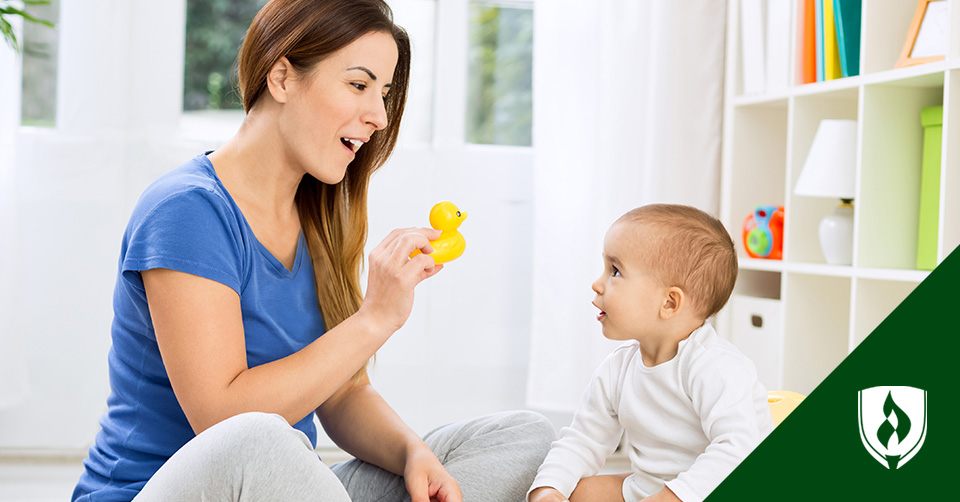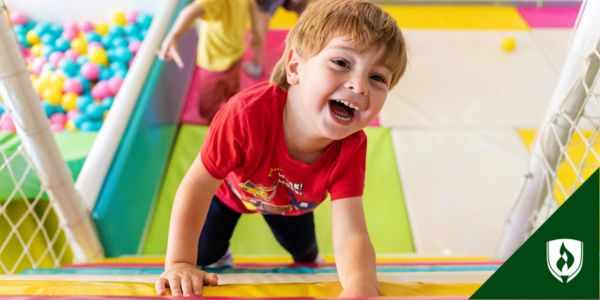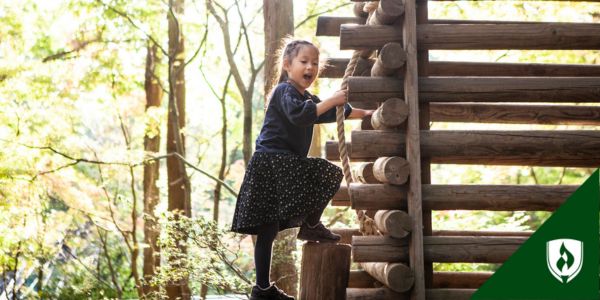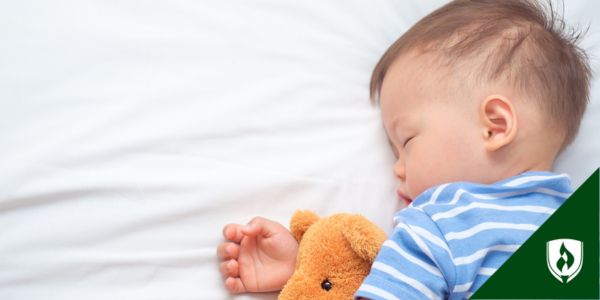
You probably know by now that babies and young children are little sponges of information. While the youngest infants aren’t holding full-fledged conversations with you just yet or relaying all of the excellent life lessons you’ve imparted on them, there’s still a ton they’re picking up from you.
Typically between the ages of eight and ten months, infants begin to understand our tone of voice and facial expressions, and at twelve months, they can use the cues in their environment to modify their own behavior in new situations.1
With that, it’s important to know the basics of social referencing and how a child uses your cues to guide their behavior, emotion regulation and demeanor. Read on to learn more about social referencing and its role in early childhood development.
What is social referencing?
Social referencing is defined by the American Psychological Association (APA)® as comparing one’s emotional and behavioral responses to those of others in order to change the reaction to match the perceived appropriate response.2
In the context of child development, a child can use a caregiver’s social cues to determine how they should respond to any and all of their own actions. Social referencing starts in infancy and is imperative to childhood development, being used more and more as the child gets older.
Why is social referencing important in child development?
Researchers have identified three main ways that social referencing impacts early development:
Emotional development
Young children learn which emotions are associated with the facial expressions, tones of voice and actions that follow. Social referencing helps develop a child’s own response to emotional stimuli—they’re looking to you to model what comes next and how to respond.
The simplest example of this is when a child falls and starts to cry. If a caregiver looks extremely concerned and almost theatrically proclaims, “Oh no! You poor baby!”, the child may cry harder because the caregiver demonstrates with their facial expressions and tone of voice that the fall warranted a big negative response. Instead, if a caregiver provides comfort with a soft smile saying “Are you hurt? It’s okay, we’ll get up and try again,” the child will likely cry less.
This way, the child learns that while the incident warrants comfort, they can still get back up to play—no big deal!
Understanding of emotive expressions
Similar to a child’s own emotional development, social referencing also teaches a child how to read the feelings of others in their environment. In the example above, the child is learning to use a caregiver response in order to learn how to react themselves.
Here, the child is referencing what they have so far learned to better understand someone else’s reaction. For example, if a child sees their caregiver crying and frowning, they know from their experience that it probably means that person is upset or sad.
It guides early decision-making
When social referencing, you will often see children look to their caregiver for approval before acting on a decision.3 This approval, or disapproval, builds trust in a caregiver’s input and lays the groundwork for later decision-making processes.
A great example of a child using social referencing in decision-making can be seen in a child psychology experiment conducted by Dr. Joseph Campos.3 This experiment has been recreated for many purposes, but Campos uses a safe-but-foreboding “visual cliff” to gauge how babies respond to their mothers’ facial expressions and social stimuli when faced with an uncertain or potentially dangerous obstacle.
When at the edge of this visual cliff, the babies reference their mother’s facial expressions to determine whether they should cross the divide to reach a desirable toy. Babies whose mothers smiled and give positive visual reinforcement were more likely to crawl to the toy over the visual cliff than those whose mothers had fearful facial expressions.3
This plays out in everyday scenarios as well. Say something shiny and unfamiliar ends up on the floor of your home. A baby’s first instinct may be to investigate, but often, they will turn to their caregivers for a cue before grabbing it.
How can I use social referencing when working with children?
If you spend any amount of time around kids, you can use social referencing to reinforce positive behaviors and mitigate negative ones. This doesn’t have to be an elaborate effort, either. If you are aware of your own non-verbal cues, you’re well on your way. Below are some ways to use the concept of social referencing in your daily interactions with young children.
1. Match your tone and body language
If there is a disconnect between your behavior and tone an infant may be able to detect it. What may not seem like a big deal to you (e.g., a calm “I’m fine” while stomping away from your partner) might be confusing for a little one. For this reason, it is important to be aware of your body language and tone of voice—remember, infants understand these non-verbal cues as early as eight months old!
2. Use facial expressions
Another way you can provide your child with emotional clarity and use social referencing to optimize early childhood development is through your facial expressions. Allow your child to see your expressions and affective displays in response to other objects or individuals. How you respond to them impacts how your child will react. By letting your child see your emotive expressions up close, you can provide them with a better understanding of what those emotions might mean in a variety of contexts.
3. Trying new things
This is the pinnacle of how caregiver expressions influence a child’s behavior in new and uncertain situations. If you respond positively when trying a new food, like a beet for example, your child will be more likely to try the beet. If you emote a fearful or disgustful response, chances are your child will steer clear of the beet. This is a basic yet important example. Your willingness to try new things with a positive effect is essential to your child’s own openness to trying something new.
Making an impact in child development
The first year of a child’s life is incredibly important for their overall development. Whether you’re a parent, caregiver or early childhood education professional, you are an important role model, as babies will look to you for information about how to process and approach the countless number of new stimuli in their environment.
By understanding what social referencing is and how it can be applied in your daily interactions, you can help young children develop a better understanding of the world around them. If you want to learn more about some of the important stages of child development, check out our article “ Early Childhood Development Milestones: What You Should Know.”
Related Articles:
1 Yolanda Williams, “What is social referencing?” Social Psychology Topics: Help and Review, Study.com, January 26, 2022. [Accessed November 2022], https://study.com/learn/lesson/social-referencing-psychology-importance-examples.html.
2“Social Referencing,” American Psychological Association, 2022. [Accessed November 2022], https://dictionary.apa.org/social-referencing.
3“An Experiment by Joseph Campos: The Visual Cliff,” June 11, 2010. [Accessed November 2022], https://www.youtube.com/watch?v=p6cqNhHrMJA.
American Psychological Association is a registered trademark of American Psychological Association, Inc.




